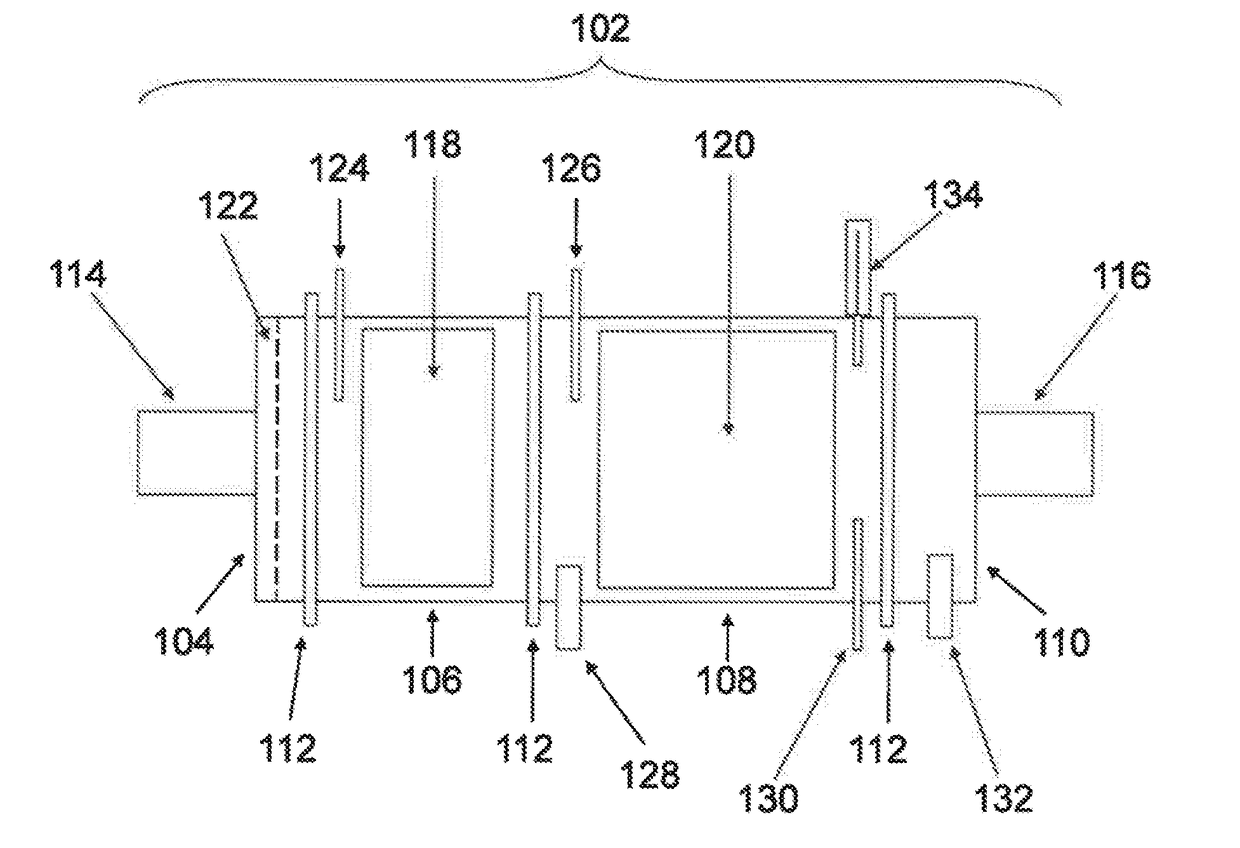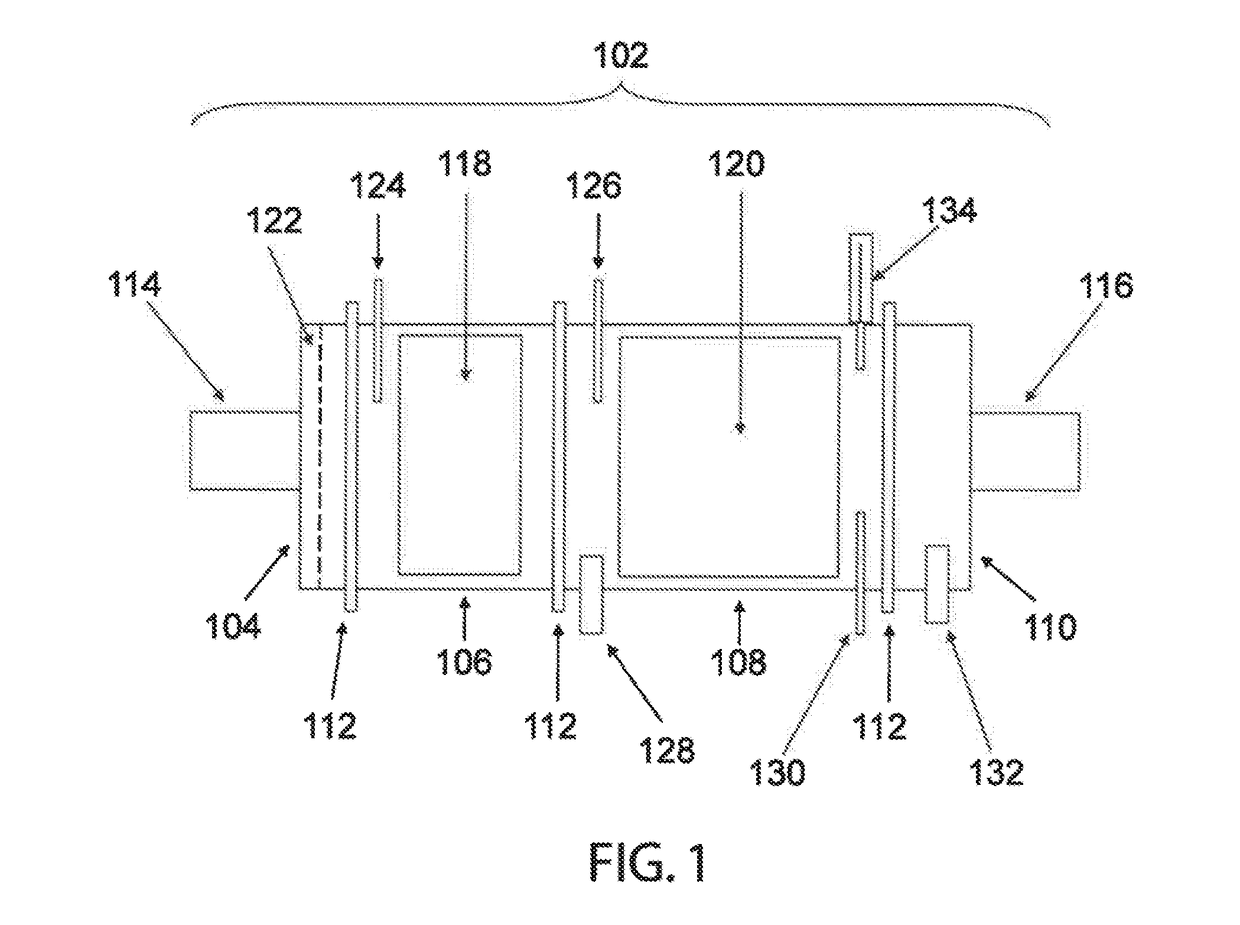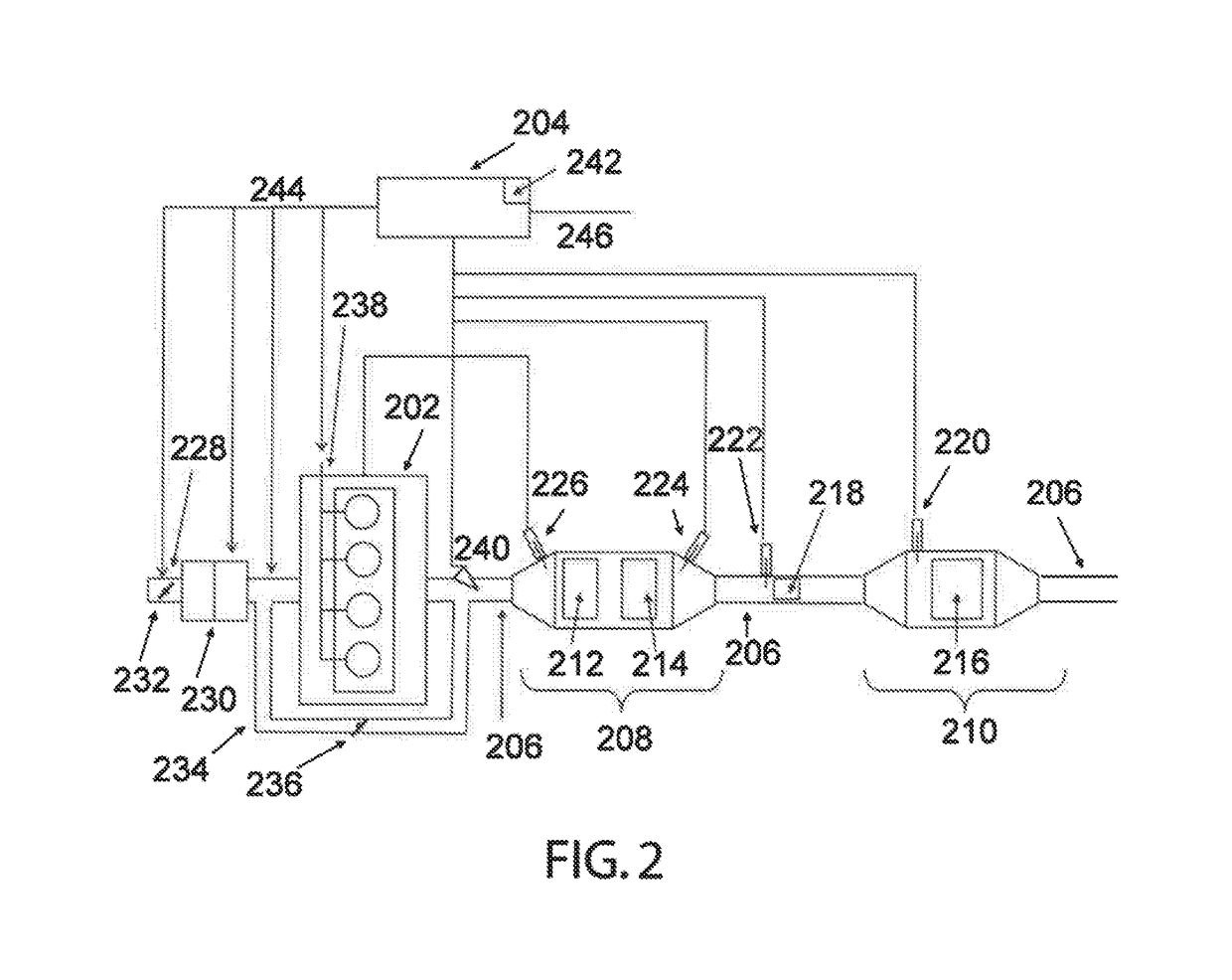Radio Frequency System and Method for Monitoring Engine-Out Exhaust Constituents
a radio frequency system and exhaust constituent technology, applied in the direction of transmission monitoring, separation processes, instruments, etc., can solve the problems of not functioning appropriately by definition, unable to dynamically capture utilizing predictive models, and changes that occur to the engine, so as to reduce the measurement response time
- Summary
- Abstract
- Description
- Claims
- Application Information
AI Technical Summary
Benefits of technology
Problems solved by technology
Method used
Image
Examples
Embodiment Construction
[0047]The invention relates to a radio frequency based system and method for monitoring engine-out exhaust emissions constituents as well as providing feedback control capabilities based on the monitored emissions.
[0048]For the purposes of this disclosure, the term emissions constituent refers to any solid, liquid, or gas phase emissions, whether resulting directly from the upstream process (such as combustion) as in the case of particulate matter constituents, or emission constituents introduced into the exhaust system through the use of additives or dosing, such as hydrocarbon or urea dosing in one example.
[0049]The terms particulate matter (PM) and soot are used interchangeably, and refer to particulate matter emission constituents which may contain carbon, hydrocarbons, sulfates, ash, or other materials. However, the invention is broadly applicable to monitoring the rates of emissions constituents in general, in which case particulate matter may be more broadly defined to includ...
PUM
| Property | Measurement | Unit |
|---|---|---|
| radio frequency system | aaaaa | aaaaa |
| radio frequency | aaaaa | aaaaa |
| frequency | aaaaa | aaaaa |
Abstract
Description
Claims
Application Information
 Login to View More
Login to View More - R&D
- Intellectual Property
- Life Sciences
- Materials
- Tech Scout
- Unparalleled Data Quality
- Higher Quality Content
- 60% Fewer Hallucinations
Browse by: Latest US Patents, China's latest patents, Technical Efficacy Thesaurus, Application Domain, Technology Topic, Popular Technical Reports.
© 2025 PatSnap. All rights reserved.Legal|Privacy policy|Modern Slavery Act Transparency Statement|Sitemap|About US| Contact US: help@patsnap.com



